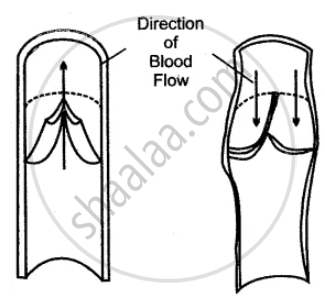Advertisements
Advertisements
Question
Complete the following sentence with appropriate word:
__________ are the blood vessels which usually carry oxygenated blood.
Solution
Arteries are the blood vessels which usually carry oxygenated blood.
APPEARS IN
RELATED QUESTIONS
Fill in the blank with suitable word given below:
The instrument used to find out the blood pressure is known as __________________.
Multiple choice question. Tick (✓) the correct choice:
The blood vessels in which blood goes away from the heart to different body parts are
- arteries
- capillaries
- veins
- both arteries and veins.
Which of the following statement is true (T) and which ones are false (F)? Mark T or F:
Blood group A has antigen A.
Name the instruments used for measuring pulse.
Name the following:
The study of blood vascular and lymphatic system.
The diagram below represents a certain category of blood vessels showing the role of a special structure in their walls :
(i) Name the kind of blood vessels shown.
(ii) What is the structure shown inside the blood vessels?
(iii) What is the role of these structures?
(iv) Are these structures present in any other kind of blood vessel? If so, name it.
(v) Towards which side of the figure (Top or Bottom) is the heart located?
Choose the Odd One Out:
Give scientific reason.
Arteries are thicker than veins.
Select the INCORRECT statement.
Given alongside are diagrams of a certain category of blood vessels showing the role of a special structure in their walls. Study the figure and answer the questions that follow.
 |
- Name the kind of blood vessels shown in the figure. What are its branches termed as?
- Name the structure shown inside the blood vessels. Write its important role.
- What kind of blood flows through these blood vessels normally? Name the blood vessel which carries blood from the heart to the lungs.
- Name a similar kind of blood vessel which is related to the liver and kidney.
- Draw a neat and labelled diagram of the transverse section of the blood vessel shown above showing the three layers of its wall and lumen.
